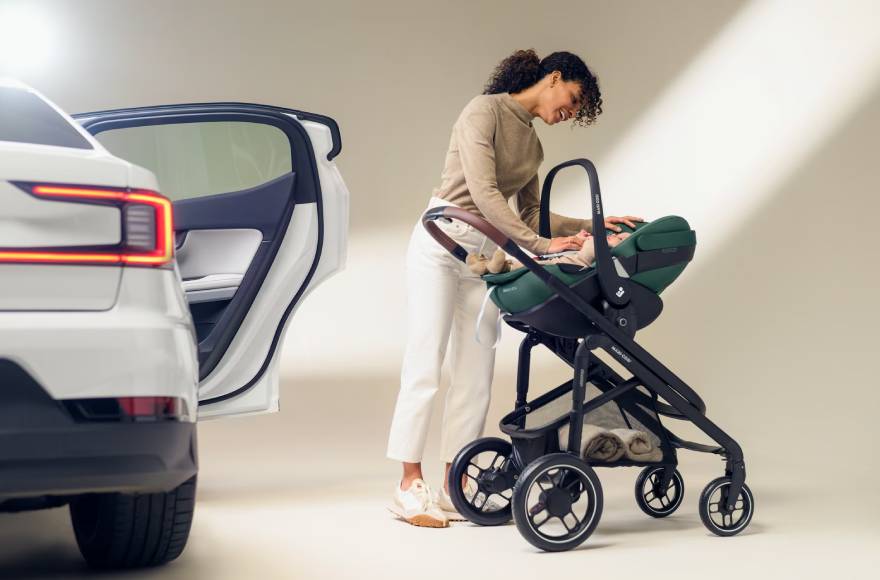When to Use Stroller Without Car Seat?

Changing from a stroller with a car seat to one without is a big deal for parents. Your baby is growing up! But, when?
Usually around 6 months and can sit up on their own with good neck control it’s time to switch.
When to use a stroller without the car seat?
Most of the time the transition can start anywhere between 4-6 months. But 6 months is the sweet spot for most babies. The key here is your baby’s development not just their age.
Before you get rid of the car seat, make sure your baby can sit up unassisted and hold their head up like a boss. It’s for their safety and comfort.
Also check your stroller is up to date with safety standards. Here are a few things to consider:
- Don’t hang bags on the handlebar. This will tip the stroller.
- Buckle your child in.
- Engage the brakes when you’re not moving the stroller.
- Never leave your child unattended for a second.
Every baby is different. Watch for those readiness cues and enjoy this new phase of freedom with your little explorer!
Check this out:
💡 Did You Know?
1. There are specific weight and height limits for using a stroller without a car seat, typically ranging from 50-65 pounds and 40-43 inches tall. It’s important to check the manufacturer’s guidelines to ensure the stroller is appropriate for your child’s size.
2. Some strollers are equipped with a reclining feature, making them suitable for older children who no longer need a car seat but may still benefit from a comfortable resting position during walks.
3. Using a stroller without a car seat can be a more convenient option for short trips or outings where you prefer not to bring the car seat along, reducing the overall weight and bulk of your baby gear.
4. Strollers with adjustable harness systems are perfect for safely securing children who are transitioning from a car seat to a stroller. Make sure to properly adjust and fasten the harness to keep your child secure.
5. Some strollers come with additional accessories like snack trays or storage compartments, offering added convenience when using the stroller without a car seat. These extras can help make outings with your child more enjoyable for both of you.
Transitioning To Stroller Sans Car Seat
Making the switch from a stroller with a car seat to just a stroller is a big deal for both you and your baby. It usually happens around 6 months old, but every baby is different.
You can start thinking about this change anywhere between 4 and 6 months. Most folks do it around the 6-month mark.
Got a tiny traveler? According to the American Academy of Pediatrics, hold off on stroller-only rides until at least 4 months old.
So, how do you know your baby is ready? It all comes down to neck muscle strength. Your little one needs to be able to sit up and hold their head steady for a while.
In other words, don’t rush it. You’ll know they’re ready when they can rock the head control and sit up like a boss.
Age Guidelines for Stroller Use
Switching to a stroller without a car seat is based on the baby’s age and developmental milestones. For that little cutie you love, consider this:
Babies can start stroller rides as early as 4 months if the stroller can recline enough to cradle their little head. But hold up—it’s a safe bet to wait until the baby is 6 months. By then their neck muscles are like tiny steel cables and can support that sweet head.
Why 6 months? At 6 months most babies can hold their heads up without using a car seat. This means they won’t look like a bobbleheads during your park stroll.
So, keep an eye on those milestones. That way your baby will be as comfy as a king or queen on their throne during every stroller trip.
Importance Of Baby’s Neck Strength
Before ditching the car seat, a baby needs to have a sturdy little neck! Imagine trying to hold a watermelon upright with spaghetti noodles. That’s basically a baby without neck strength in a stroller. Strong neck muscles mean your little one can hold their head up like a champ. It’s like earning their stroller license—no head wobbling allowed!
Keeping an eye on neck strength milestones is key. Baby’s gotta be able to comfortably hold that adorable noggin upright for a good while. Weak neck muscles can turn a stroll into a neck ache or worse. So, mom and dad, make sure your baby’s neck muscles are up to the challenge.
Tips:
- Watch for solid head control.
- Notice if a baby can keep their head up without turning into a bobblehead.
- If in doubt, consult that trusty pediatrician. They know best!
Sitting Ability For Stroller Use
Here’s the skinny: your baby needs to sit up like a pro before riding a stroller without a car seat. It’s like graduation from baby basics to stroller star status. Our tiny humans must master sitting without turning into a floppy mess. This ensures their stroller ride is comfy and safe, not a hot mess express.
Key Points:
- Baby must sit up independently.
- They should hold their head up with ease.
- Monitor those baby milestones like a hawk (or just a very attentive parent).
You’ll know it’s game on when your baby shows off sitting tall and proud. Until then, keep cheering them on! Your baby’s stroller journey is just around the corner, sans the car seat.
Safety Standards And Recommendations
In 2014 the Consumer Product Safety Commission (CPSC) updated the safety standards for strollers. These standards address issues like pinched fingers and wobbly brakes.
Strollers made after 2014 must meet these CPSC standards.
To keep your baby safe don’t hang bags on the handlebar it can tip the stroller over.
By following CPSC standards parents can create a safe environment for their baby when using a stroller without a car seat.
Stroller Use Safety Tips
Safety first when using a stroller without a car seat. Here are the must-dos:
- Don’t overload pockets, baskets, or cup holders. Overloading can tip the stroller.
- Buckle up your child with the harness provided by the stroller manufacturer. It’s essential.
- Be careful when folding or unfolding the stroller. Don’t pinch your fingers or accidentally hurt your child.
- Lock the brakes when the stroller is parked. So it won’t roll away.
- Follow the weight and age recommendations of the manufacturer. Using the stroller correctly is safe.
- Never leave your baby unattended in the stroller. A minute of distraction can cause accidents.
- Don’t leave your child alone in the stroller. A minute of distraction can be a disaster.
- Only use approved extra seats or accessories. This is for safety and functionality.
Following these safety tips will make strolling with your baby without a car seat a safe and fun experience.
FAQ
When Can Babies Use a Stroller Without a Car Seat?
So, when can you finally toss that car seat aside and let your baby roll in the stroller seat? Generally, it’s when your little bundle of joy can sit up all by themselves. This magical moment usually happens around 6 months, but hey, every baby is their own masterpiece! Some might take a scenic route to sitting independence, while others zoom there. The real sign they’re ready? When they can plop themselves down and stay put comfortably in the stroller.
At What Age Should You Ditch the Car Seat in the Stroller?
Pediatricians often give the green light to use just the stroller seat when babies are about 6-9 months old. This wait gives their back muscles some workout time to strengthen up for those stroller adventures. Safety first, right? Plus, it helps their growing bones and muscles develop well. But remember, no two babies are alike. Yours might be a fast learner or the take-their-time type. When you’re scratching your head and wondering, consult your trusty pediatrician for advice that suits your one-of-a-kind little one.
When Can I Turn My Baby Around in a Stroller?
Pediatric experts suggest waiting until your baby is around six months old before letting them face forward in a stroller. By this time, they usually have good neck and head control, making it safe and comfortable for them to sit in a front-facing position. This is an exciting milestone! It means your little one is ready to take in the world from a new perspective, showing greater interest in what’s around them.
Do You Need a Car Seat and a Stroller?
As your baby grows and hits that 20-pound mark, moving them around without a car seat attached becomes much easier. This is where a dedicated stroller can be a lifesaver. Picture this: hopping out of the car and heading straight for a walk without wrestling with a bulky seat. Bliss, right?
While infant car seats are great for those early months, a standalone stroller soon becomes essential. It provides a smoother, more practical way to get around. Think of it as switching from hauling a suitcase to gliding with a carry-on. The stroller gives you and your baby comfort and convenience, making every outing more enjoyable. Plus, you’ll have one less thing to lug around, freeing you up to focus on the fun of your adventure together.
By shifting to a stroller when the time is right, you’ll ensure that your child remains comfortable while making your outings a breeze. You’ll both be ready to explore the world, one stroll at a time.
